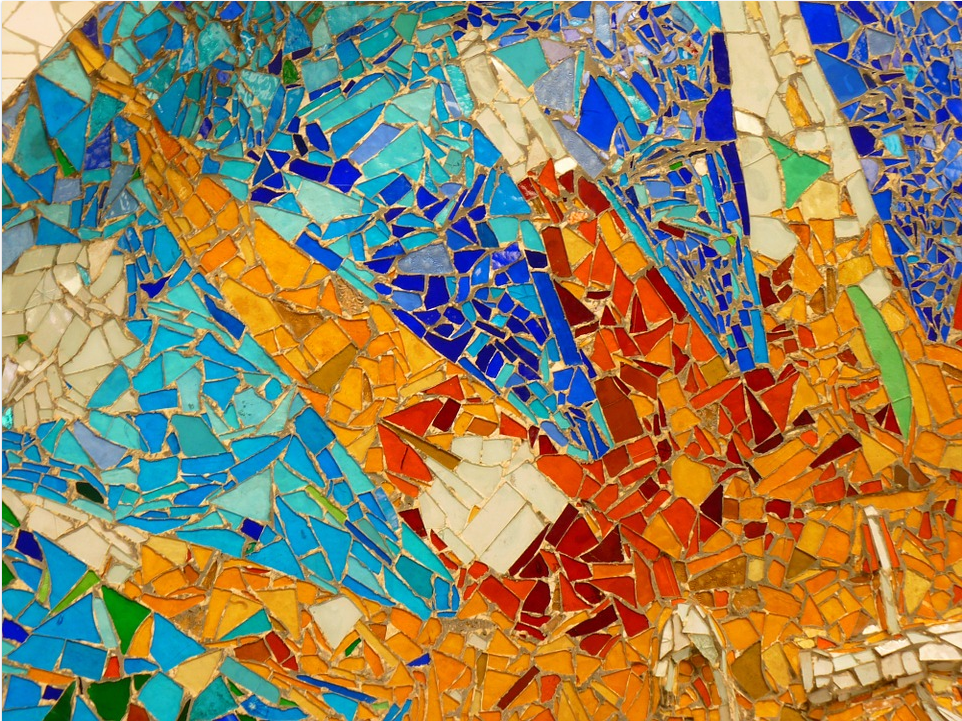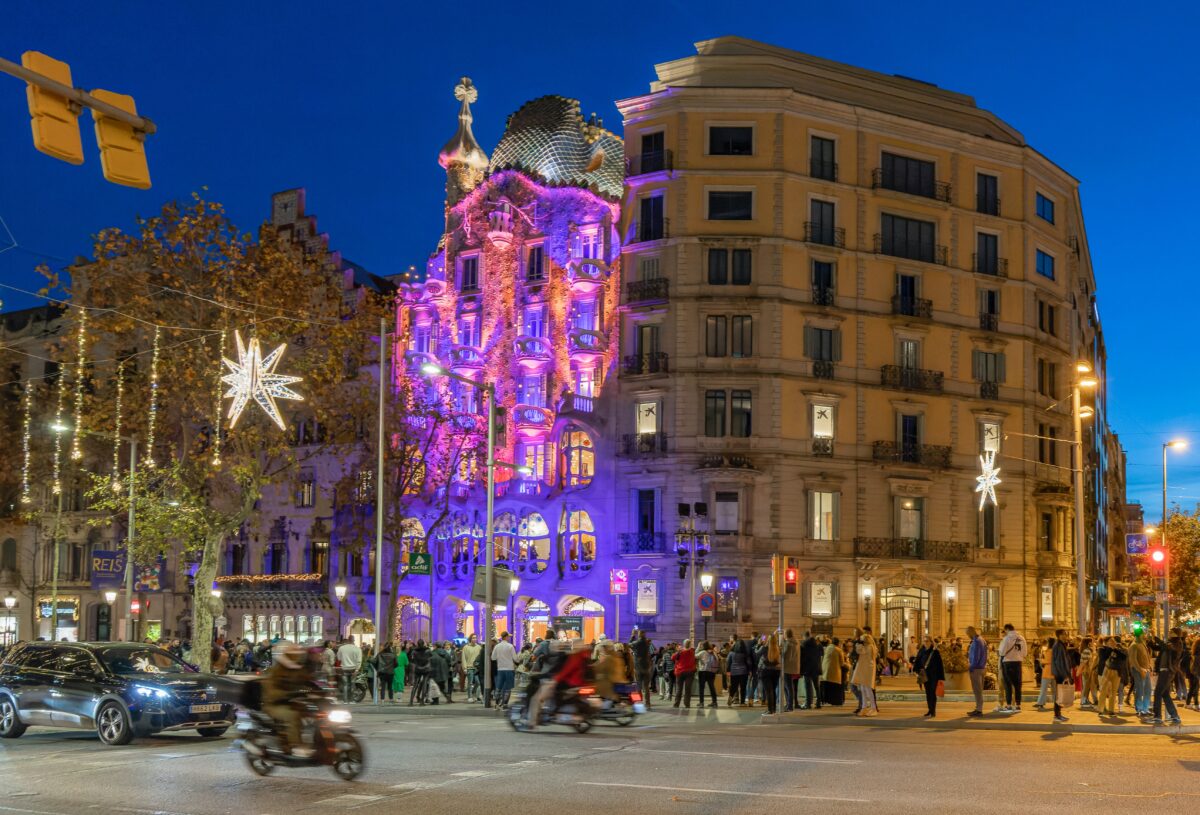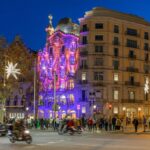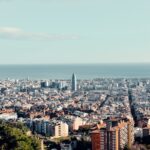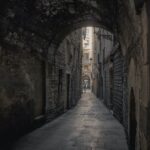Barcelona is a city with a rich cultural heritage, and each month brings a new set of traditions and celebrations for locals and visitors to enjoy. From festivals and parades to religious celebrations and cultural events, there is always something happening in the city, whether you’re looking for activities with the family (most of them are great for kids) or in solitary this Barcelona’s year events calendar will help you to get the most of your visit.
Here’s a look at some of the traditional events that take place each month in Barcelona:
January:
Jan 6
- The Three Wise Men Cavalcade (Desfilada de Reis) from the East arrive in Catalonia in original carriages with their retinue of pages, bringing their magic and good wishes. This is one of the most anticipated events of the year for all children in Barcelona and neighboring towns. The tradition of receiving the Three Wise Men cavalcade is maintained in many countries around the world, taking on different characteristics in each place.
In Barcelona, this celebration has gained spectacularity and currently represents an essential family event. Arriving from the East, the Three Wise Men and their pages disembark at Moll de la Fusta and begin a route through the city’s main arteries.
Numerous sophisticated and original decorated carriages parade, offering a spectacle of light, music, and color. The entire city is dedicated to the organisation and enjoyment of this celebration. Several artistic companies, entities, and businesses are involved in the production of carriages, making possible a colossal and unique parade that has been celebrated since the 1960s.
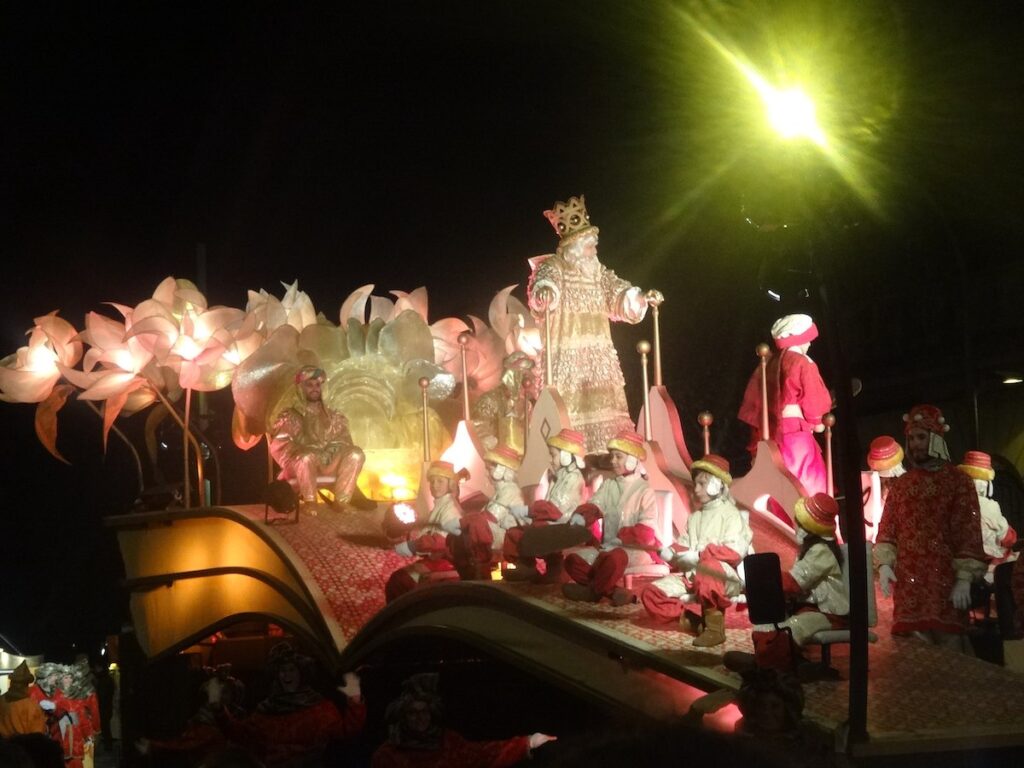
February:
- The Carnaval de Barcelona is a festival that happens annually in late February or early March. It celebrates life, diversity, and creativity with people dressing up in costumes and masks, dancing, and singing in the streets. The festival has ancient roots in pagan traditions that celebrated the arrival of spring, and it has evolved over time to reflect contemporary issues. During the festival, there are parades, contests, performances, and traditional dances. The Carnaval de Barcelona is a beloved tradition that attracts locals and tourists of all ages and backgrounds to come together and celebrate their shared humanity.
- The Festes de Sant Eulàlia, organized by the City Council of Barcelona, are celebrated in mid-February, coinciding with Saint Eulalia’s feast day. The winter festival program in Barcelona is complemented by the Llum BCN festival in Poblenou.
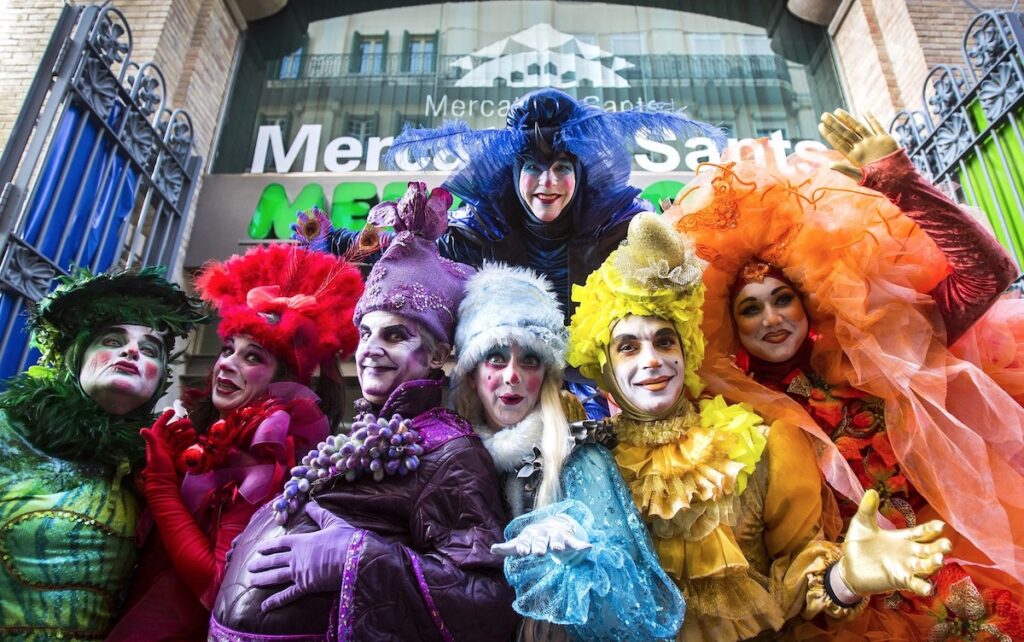
March:
March 3
- The Festa de Sant Medir is one of the most deeply-rooted festivals in the town of Gracia. It is mainly known for the tons of candy and sweets that are thrown to the public from horses, carriages, and trucks. In the morning, a parade of colles (groups) is organized through the neighborhood, followed by a pilgrimage to the Sant Medir hermitage in Collserola, where a ceremony is held to honor the saint. Upon returning, the same colles lead a large parade through the main streets of the neighborhood and distribute sweets among the public, who come prepared with bags, buckets, and umbrellas to collect as much as they can.
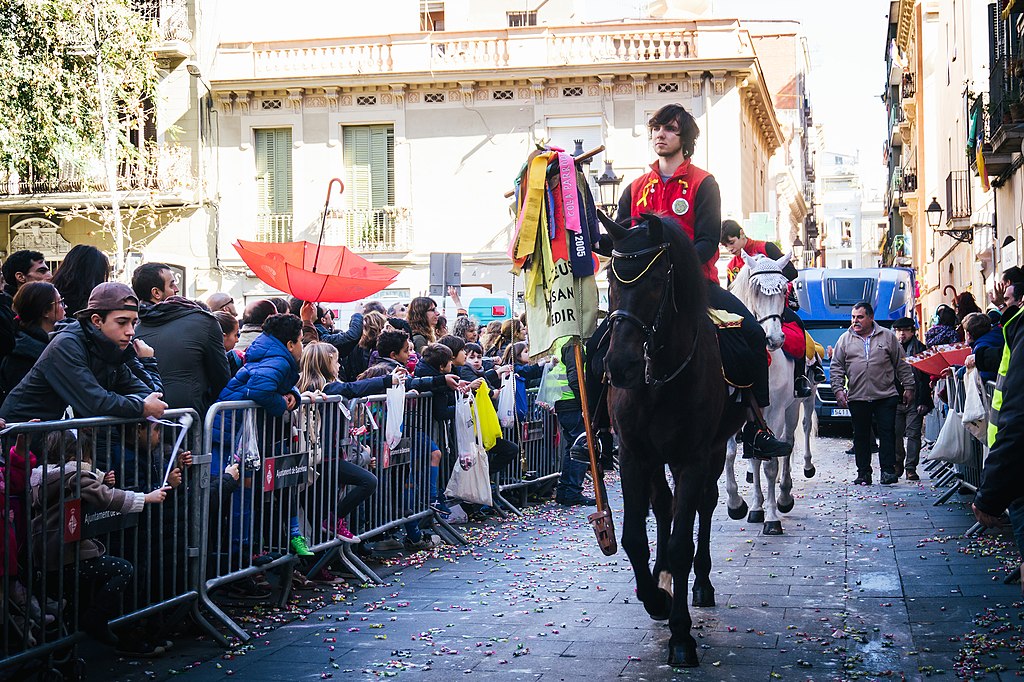
April:
April 23
- The Sant Jordi Festival (Diada de Sant Jordi) is a popular event that takes place on April 23rd. It commemorates the legend of Saint George, a Christian knight who slayed a dragon to rescue a princess. According to the legend, a rose bush grew on the spot where the dragon’s blood was spilled. On this day, it is traditional for men to give women a rose to symbolize the rose bush, and for women to give men a book, in honor of the death anniversary of two of the world’s most famous writers, William Shakespeare and Miguel de Cervantes. The streets of the city are filled with stalls selling flowers and books, and there are also cultural events and live performances. The Sant Jordi Festival is a celebration of love, culture, and the power of stories, and it is a beloved tradition in Catalonia.
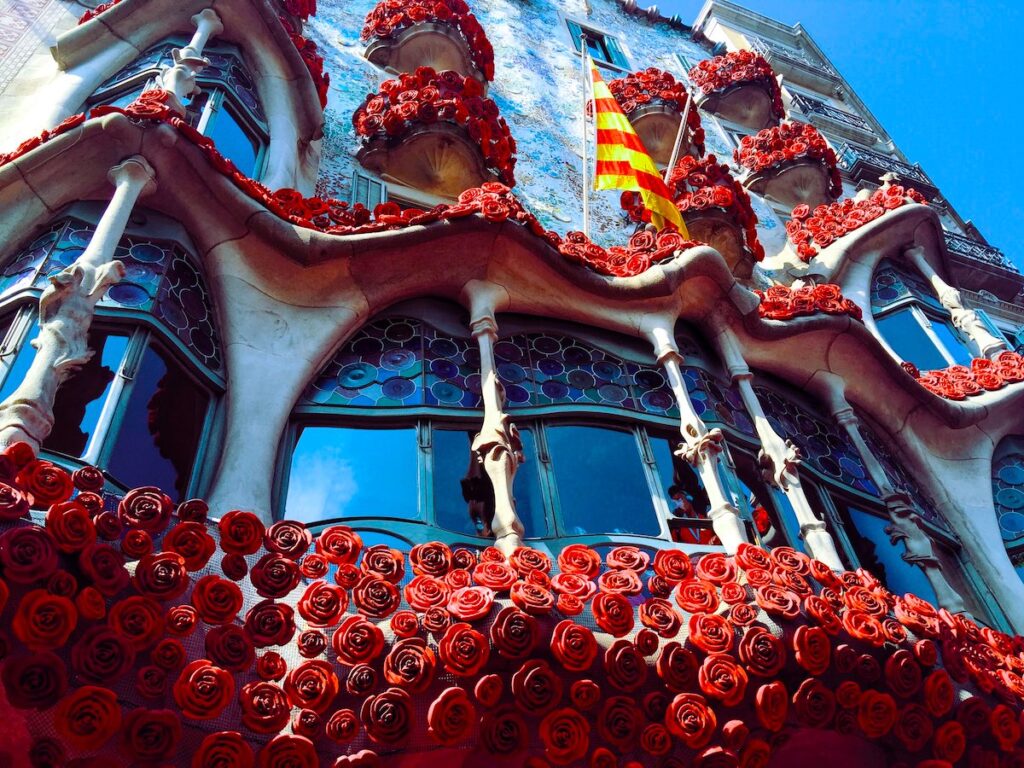
May:
- The Fira de Sant Ponç in Barcelona has been celebrated since the Middle Ages, dedicated to medicinal herbs and it was established on the day of Saint Ponç on 11th of May. Today, the stands of herbalists and artisans are arranged on the street of Hospital, in the Raval neighborhood, a location that has been kept since 1817, after having moved to the Plaza de Sant Miquel, the street of Sant Cugat del Rec and the surroundings of the church of the Hospital de la Santa Creu.
- La Nit dels Museus, also known as “Museums Night” is an annual event that takes place in various cities around the world, including Barcelona. On this night, many of the city’s museums and cultural institutions open their doors to the public free of charge, and offer special activities and programs. The event typically takes place on a Saturday in May, and it allows visitors to explore the city’s rich cultural heritage and discover new art and artifacts. Many of the museums also stay open late into the night, allowing visitors to experience the institutions in a unique and different way. In addition to the museums, several other cultural institutions also participate, such as libraries and universities, making it a great opportunity to discover some hidden gems of the city.
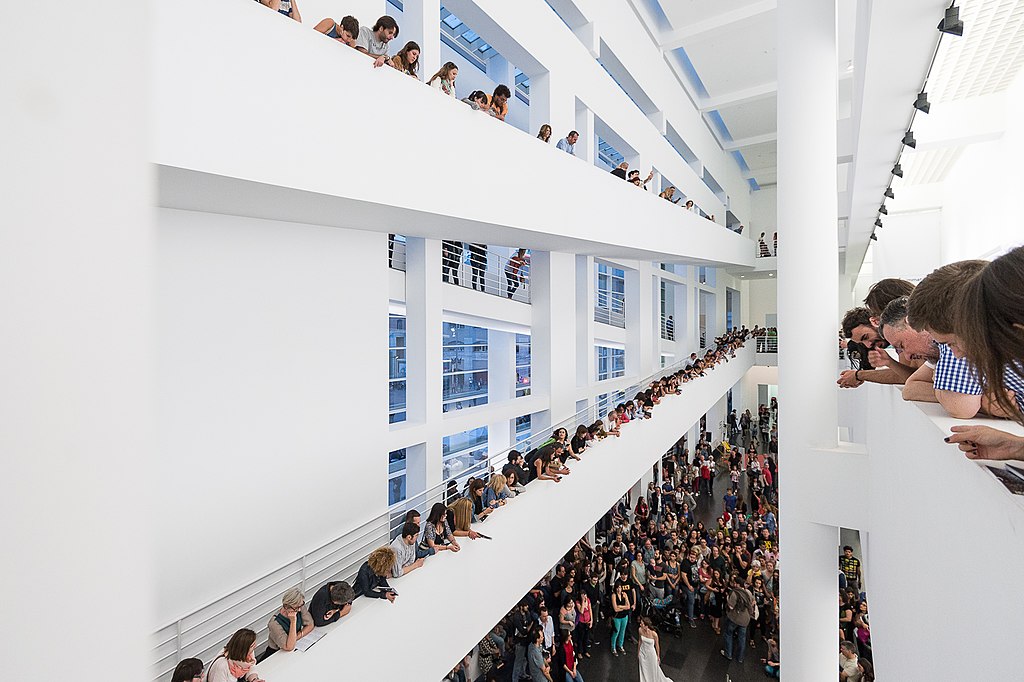
June:
- June is the month for music festivals in the city. World renowned Primavera Sound and Sonar festivals take place.
- Also, the Corpus Christi festival, which for centuries has been considered the true main festival of the city, is a tradition that has more than six hundred years of history in Barcelona. Today, the most representative elements of the festive imagery of the city, represented by the parade, take part in it. In the past, it also became a model for many other towns in the country. The main event of the celebration is the procession, which currently consists of two completely different parts: the festive one, in which the Popular Parade of Barcelona, expanded as indicated by the protocol, makes a pass through the squares and streets of the city center with elements of festive imagery, music and dances. The other is the Corpus Christi procession of the Seu, which has a strictly religious character. There are other manifestations of popular culture, such as the L’Ou com Balla “dancing egg” or the Sardanas, which are present in the festive program.
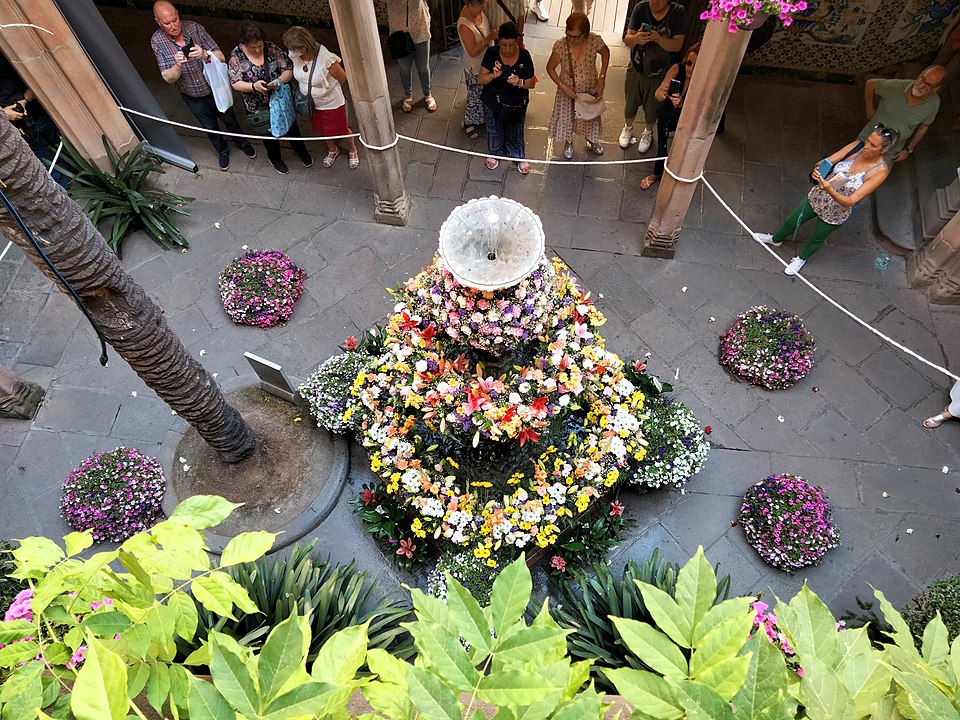
July:
- The Grec Festival is a performing arts festival that takes place in the city’s Teatre Grec. The festival features a variety of performances, including theater, dance, and music, and it’s a great opportunity to experience the city’s vibrant cultural scene.
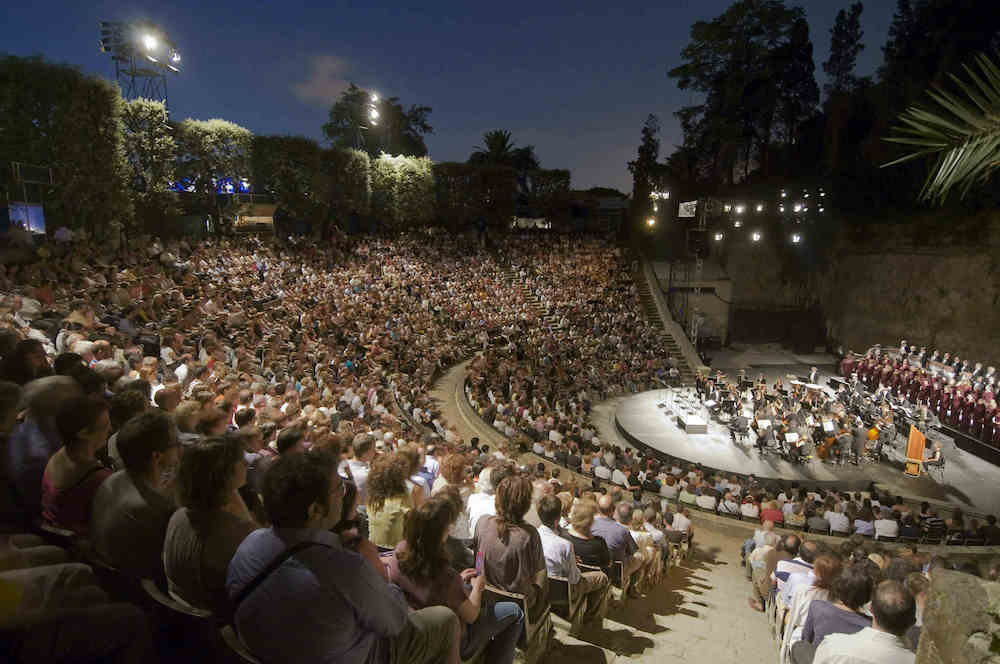
August:
- The Festa Major de Gracia is a traditional festival that takes place in the Gracia neighborhood. During the festival, the streets are decorated with colorful displays and there are live music performances, parades, and traditional Catalan food and drinks.
- The Festa Major de Sants is a traditional festival that takes place in the Sants neighborhood. The festival features live music performances, parades, and traditional Catalan food and drinks.
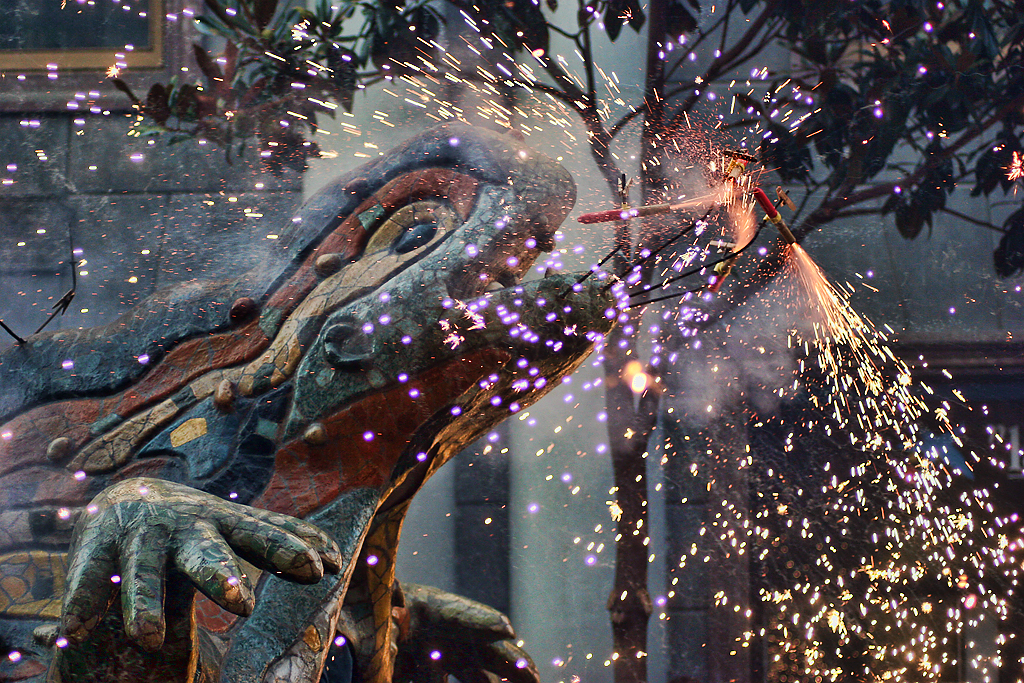
September:
- La Diada de Catalunya, which takes place on September 11th, is a significant national holiday in Catalonia. The day is marked by vibrant parades, cultural events, and thought-provoking speeches that offer a deeper insight into the region’s rich history and cultural heritage. Historically, this day has been closely linked to the Catalan independence movement, and it serves as an opportunity for Catalonians to celebrate their unique identity and express their desire for autonomy. Whether you’re a local or a visitor, the festivities offer a chance to immerse yourself in Catalan culture and witness the passion and pride that runs deep in the region.
- The Festes de la Mercè is the city’s main festival, taking place in honor of the city’s patron saint, the Virgin of Mercè. The festival features a variety of events, including parades, live music performances, cerca viles, giants parades, corre-focs and the famous human towers or Castells, which are traditional Catalan spectacles. Catalonia has a rich tradition of celebrating festivals that are often associated with fire, devils, and death. For instance, the Dance of the Death in Verges is a popular tradition that dates back centuries and is still practiced today. Despite the seemingly dark themes, these festivals are usually joyous occasions that bring communities together to celebrate their unique cultural heritage.
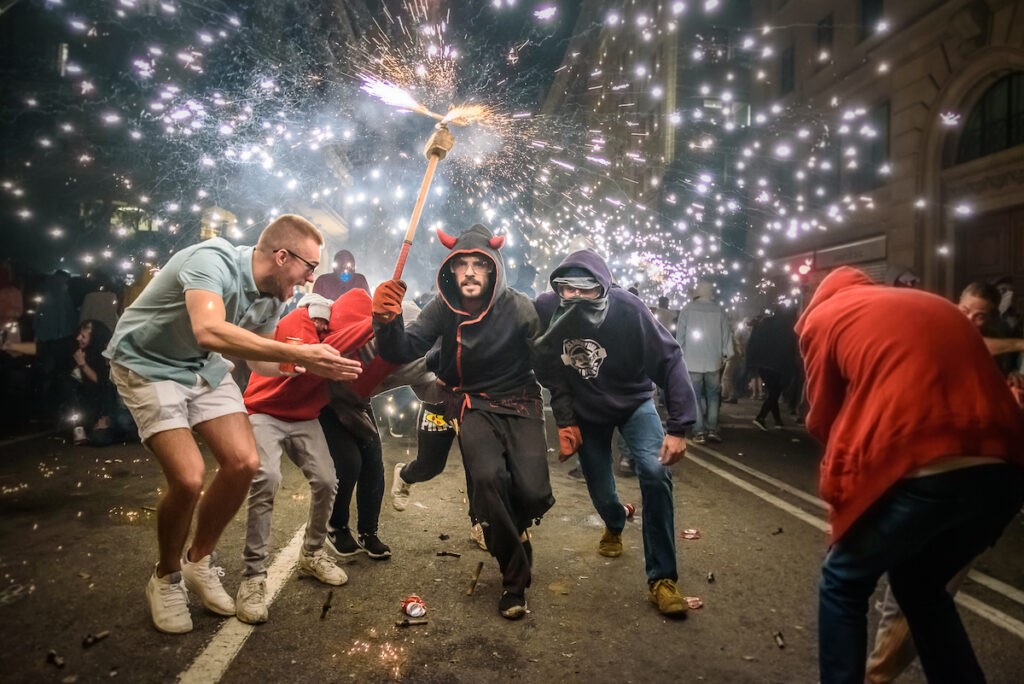
October:
- Voll-Damm Barcelona Jazz Festival or Festival de Jazz de Barcelona is the oldest running musical event in the city, currently running its 53rd edition. Performances take place all over the city at multiple venues, across several months. This year’s festival, which has already begun, will run until October 2022. You can expect to find some of the best jazz musicians from all around the country and the world!
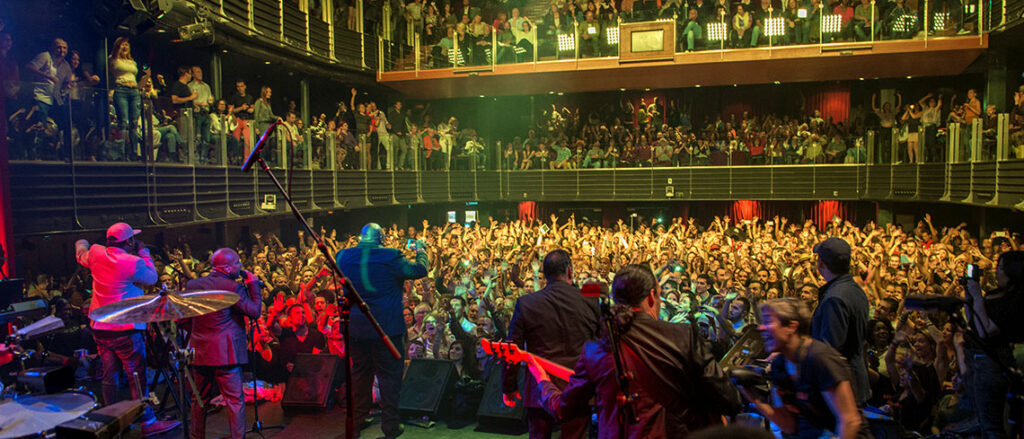
November:
- La Castanyada (Tots Sants) – A November 1st tradition in Barcelona – on the All Saints Day public holiday – is La Castanyada which means chestnut time. This is tradition of eating castanyes (roasted chestnuts,) moniatos (sweet potatoes,) panellets (cakes) and drinking muscatel sweet wine.
- Halloween, although viewed by some Catalonians as a cultural Anglo-Saxon invasion of their traditions, has become increasingly popular, especially among children who love to dress up for the occasion. Despite being protective of their cultural heritage, many Catalonians embrace the fun and playful spirit of Halloween and enjoy the opportunity to celebrate with friends and family.
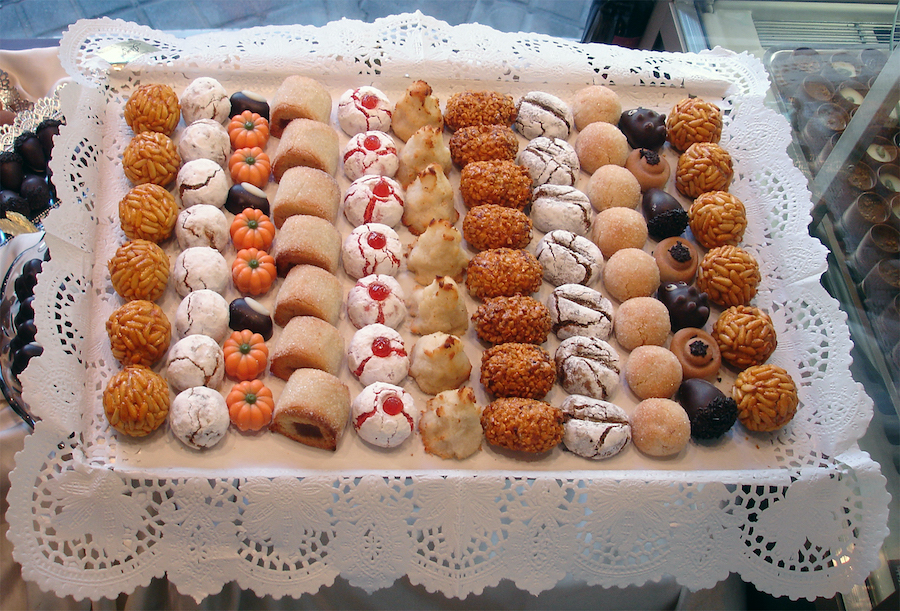
December:
- The Christmas markets and lights are one of the most popular events in the city. The streets are decorated with Christmas lights, and there are various Christmas markets around the city, where you can find traditional Christmas decorations and gifts.
- The Fira de Santa Llucia is a traditional Christmas market that takes place in the city’s Gothic quarter. The market features a variety of traditional Christmas decorations, including the famous Caga Tió, a log that “poops” out sweets and small presents.
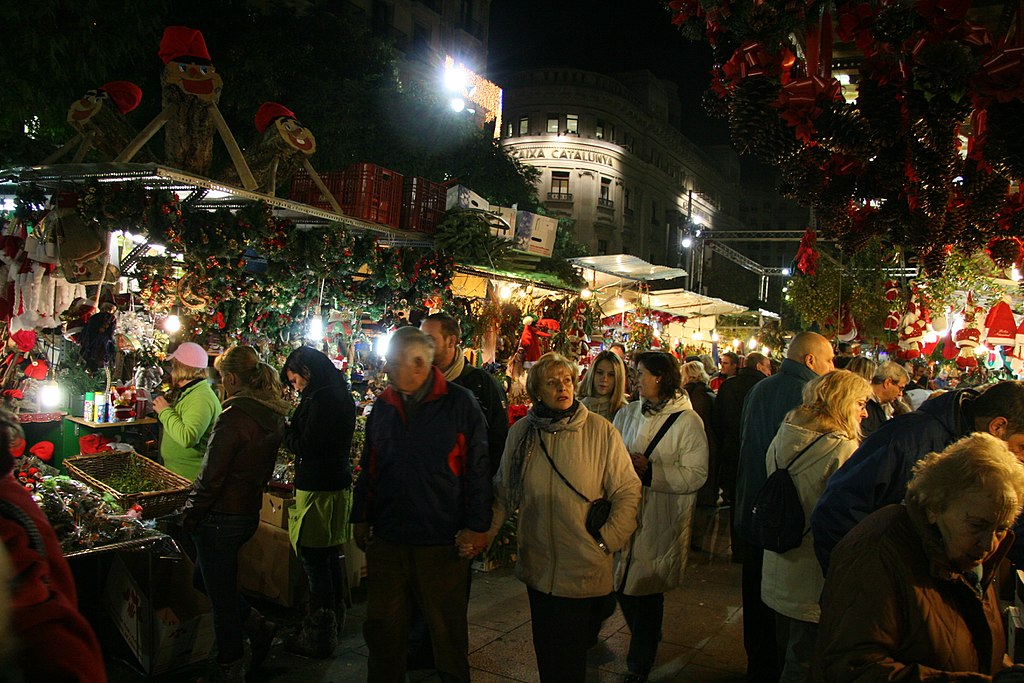
From the colorful and vibrant Carnaval de Barcelona to the stunning and breathtaking human towers, there is always something to see and experience in this city. Barcelona is a place where people come together to celebrate their history, culture, and traditions, and it is a city that never fails to amaze and inspire its visitors. From the festive Sant Jordi Festival to the solemn and moving La Mercè, Barcelona’s festivals and events reflect the richness and diversity of its culture and people. Whether you are a local or a tourist, these events offer a unique and unforgettable glimpse into the heart and soul of this beautiful city. So, if you are looking for a place to experience the best of Spanish culture and tradition, then Barcelona is the perfect destination for you.



